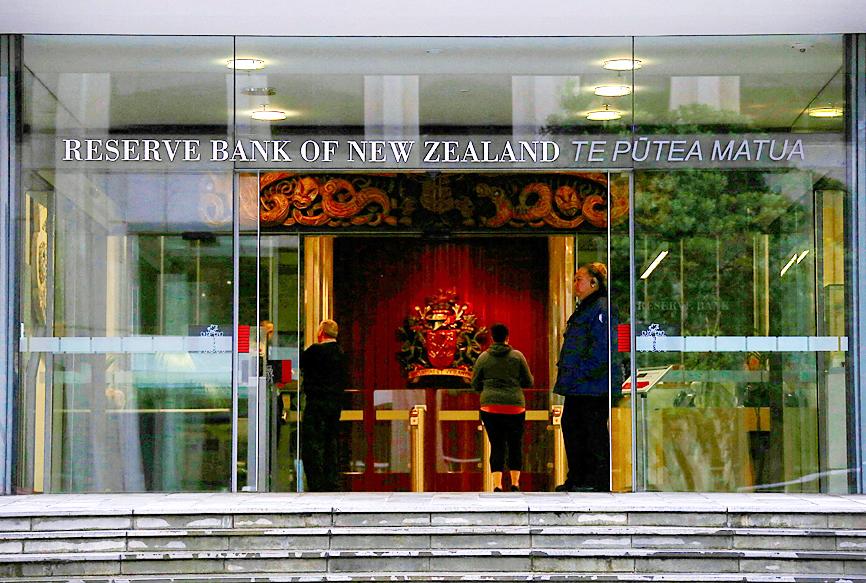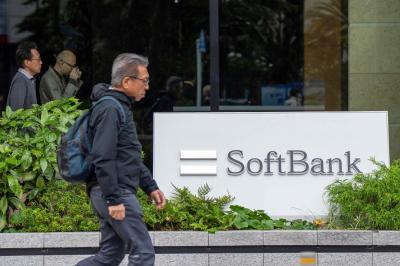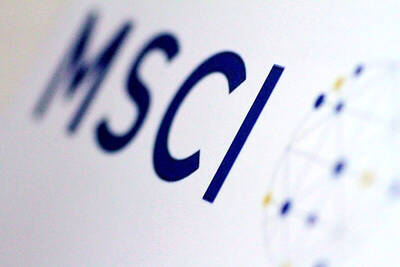New Zealand’s central bank yesterday raised interest rates by half a percentage point, its biggest hike in 22 years, indicating it is worried that inflation is getting out of control.
The Reserve Bank of New Zealand’s (RBNZ) Monetary Policy Committee lifted the official cash rate (OCR) to 1.5 percent from 1 percent, the first time it has delivered an increase of that magnitude since 2000.
“The committee agreed that their policy ‘path of least regret’ is to increase the OCR by more now, rather than later, to head off rising inflation expectations,” the RBNZ said. “It is appropriate to continue to tighten monetary conditions at pace.”

Photo: Reuters
The central bank has raised the cash rate for four straight policy meetings, lifting it by 125 basis points since October last year, as inflation surged to a 32-year high. The risk is that the rapid rise in borrowing costs could stall the economy. House prices are already falling, and business and consumer confidence have slumped amid New Zealand’s worst COVID-19 outbreak.
“The RBNZ’s decision to accelerate its hiking cycle shows it is willing to move decisively to get a hand on surging inflation,” said Ben Udy, an economist at Capital Economics in Singapore. “We expect it to hike the OCR to 3 percent by the end of this year.”
In its statement, the RBNZ said it remains comfortable with the forward track for the cash rate it published in February, indicating it sees no need to take rates higher than the 3.25 percent peak it forecast for the end of next year.
However, it said it wants to get the OCR “to a more neutral stance sooner.”
It estimates a neutral level for the cash rate is about 2 percent.
“The committee noted that the OCR is stimulatory at its current level,” it said. “Members noted that annual consumer price inflation is expected to peak around 7 percent in the first half of 2022. The risk of more persistent high inflation expectations has increased.”
The RBNZ aims to keep inflation around the middle of a 1 to 3 percent target range.
New Zealand is at the forefront of global policy tightening as central banks around the world respond to an inflation surge that is threatening to become entrenched. The Bank of Canada was expected to raise its key rate by half a point to 1 percent later yesterday, while the Bank of Korea might add to its three rate hikes today.
The US Federal Reserve began its tightening cycle last month and its policymakers have signaled they could move in half-point steps if needed. The Reserve Bank of Australia this month opened the door to rate increases, with economists tipping its first hike would come in early June.
“Heightened global economic uncertainty and inflation are dampening consumer confidence,” the RBNZ said. “The rise in mortgage interest rates — amongst other factors — have acted to reduce mortgage demand and house prices.”
Russia’s invasion of Ukraine is worsening inflation by driving up commodity prices, while also hurting confidence and dampening the economic outlook.
“A larger move now also provides more policy flexibility ahead in light of the highly uncertain global economic environment,” the RBNZ said.

PERSISTENT RUMORS: Nvidia’s CEO said the firm is not in talks to sell AI chips to China, but he would welcome a change in US policy barring the activity Nvidia Corp CEO Jensen Huang (黃仁勳) said his company is not in discussions to sell its Blackwell artificial intelligence (AI) chips to Chinese firms, waving off speculation it is trying to engineer a return to the world’s largest semiconductor market. Huang, who arrived in Taiwan yesterday ahead of meetings with longtime partner Taiwan Semiconductor Manufacturing Co (TSMC, 台積電), took the opportunity to clarify recent comments about the US-China AI race. The Nvidia head caused a stir in an interview this week with the Financial Times, in which he was quoted as saying “China will win” the AI race. Huang yesterday said

Japanese technology giant Softbank Group Corp said Tuesday it has sold its stake in Nvidia Corp, raising US$5.8 billion to pour into other investments. It also reported its profit nearly tripled in the first half of this fiscal year from a year earlier. Tokyo-based Softbank said it sold the stake in Silicon Vally-based Nvidia last month, a move that reflects its shift in focus to OpenAI, owner of the artificial intelligence (AI) chatbot ChatGPT. Softbank reported its profit in the April-to-September period soared to about 2.5 trillion yen (about US$13 billion). Its sales for the six month period rose 7.7 percent year-on-year

MORE WEIGHT: The national weighting was raised in one index while holding steady in two others, while several companies rose or fell in prominence MSCI Inc, a global index provider, has raised Taiwan’s weighting in one of its major indices and left the country’s weighting unchanged in two other indices after a regular index review. In a statement released on Thursday, MSCI said it has upgraded Taiwan’s weighting in the MSCI All-Country World Index by 0.02 percentage points to 2.25 percent, while maintaining the weighting in the MSCI Emerging Markets Index, the most closely watched by foreign institutional investors, at 20.46 percent. Additionally, the index provider has left Taiwan’s weighting in the MSCI All-Country Asia ex-Japan Index unchanged at 23.15 percent. The latest index adjustments are to

CRESTING WAVE: Companies are still buying in, but the shivers in the market could be the first signs that the AI wave has peaked and the collapse is upon the world Taiwan Semiconductor Manufacturing Co (TSMC, 台積電) yesterday reported a new monthly record of NT$367.47 billion (US$11.85 billion) in consolidated sales for last month thanks to global demand for artificial intelligence (AI) applications. Last month’s figure represented 16.9 percent annual growth, the slowest pace since February last year. On a monthly basis, sales rose 11 percent. Cumulative sales in the first 10 months of the year grew 33.8 percent year-on-year to NT$3.13 trillion, a record for the same period in the company’s history. However, the slowing growth in monthly sales last month highlights uncertainty over the sustainability of the AI boom even as